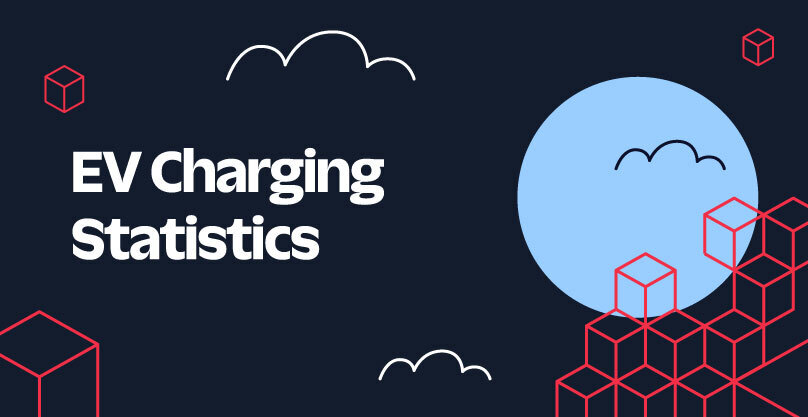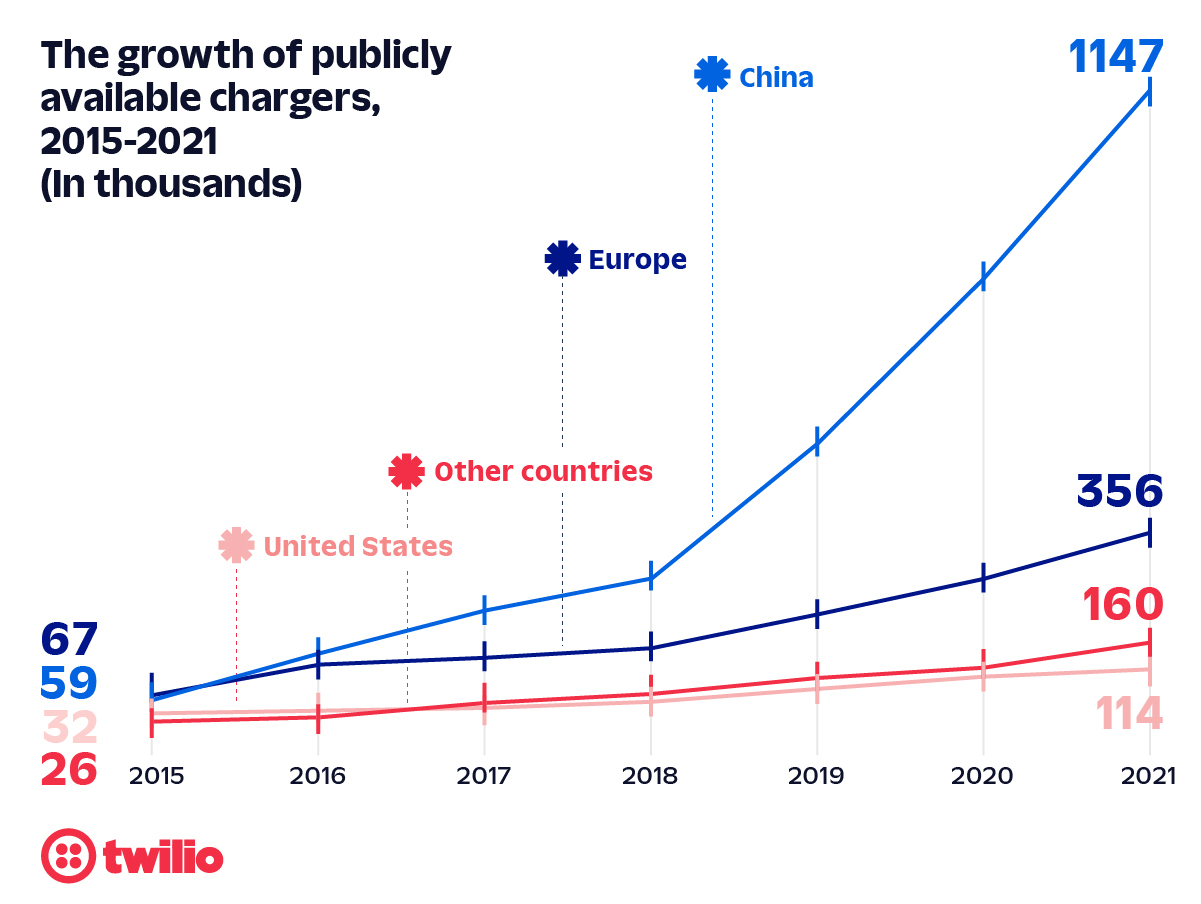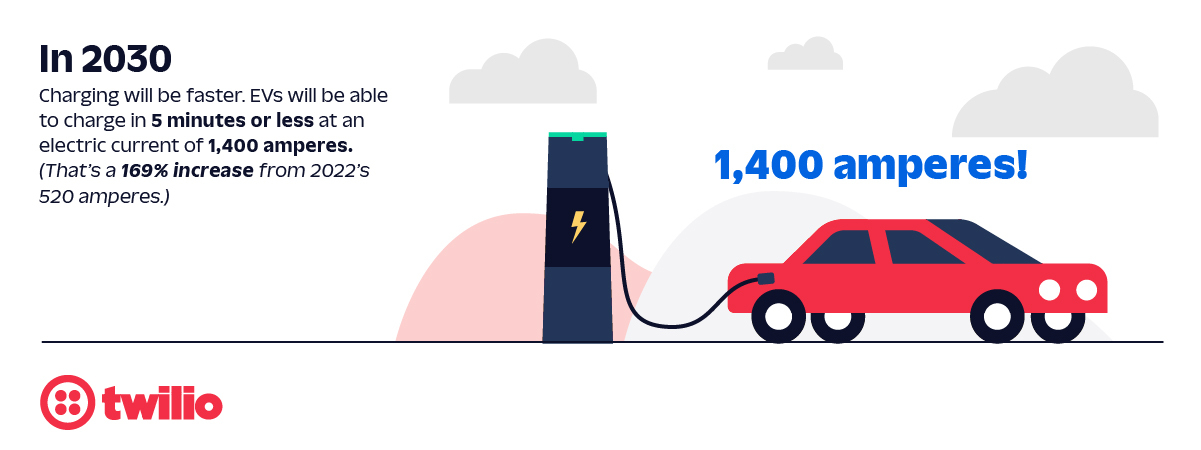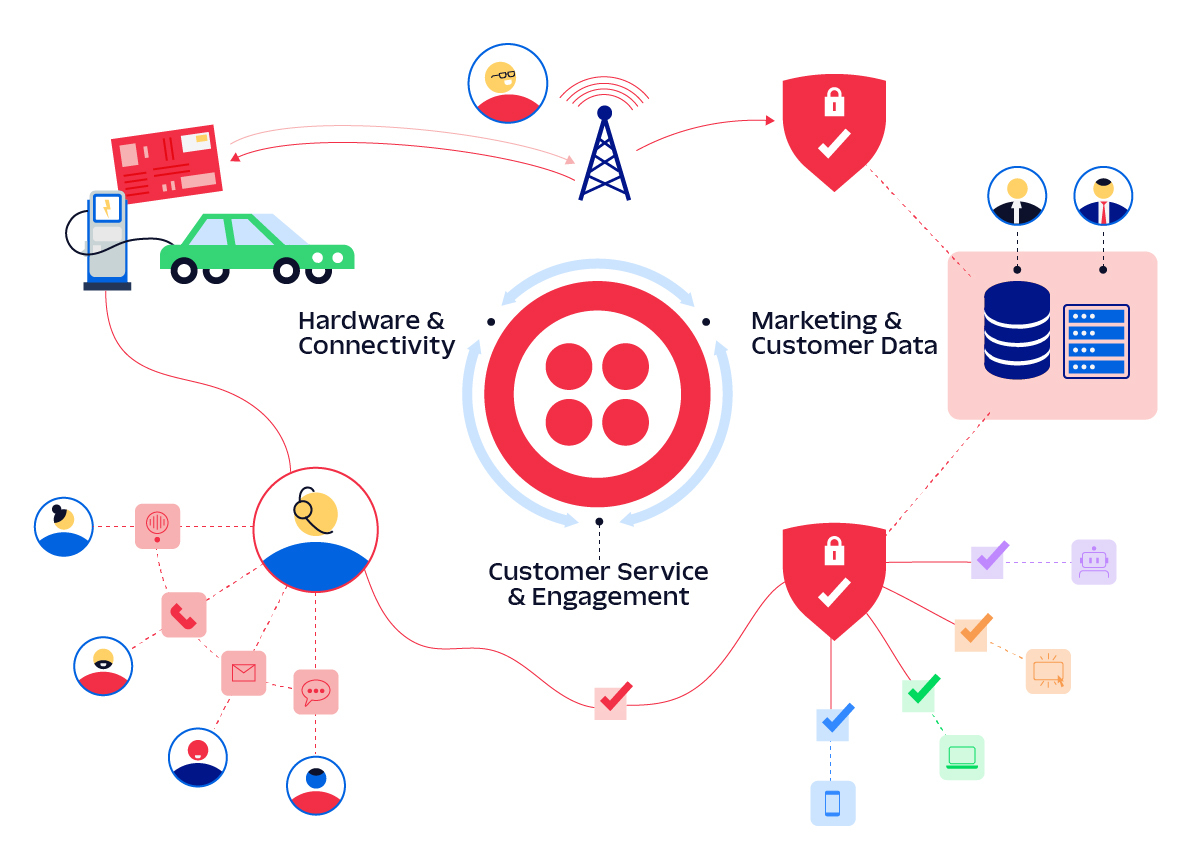10 EV Charging Statistics You Should Know for 2023
Time to read:
This post is part of Twilio’s archive and may contain outdated information. We’re always building something new, so be sure to check out our latest posts for the most up-to-date insights.

As the demand for electric vehicles (EVs) continues to rise and more countries adopt zero-emissions laws, the EV industry is expected to experience rapid growth. However, the current charging infrastructure is not yet able to keep up with this increase in EV sales. Both charging companies and governments are working to address this issue by expanding the number of publicly available charging stations and working towards making them more reliable.
We have collected 10 statistics that provide an overview of the current state of EV sales and the charging infrastructure as we’re getting ready for the innovation and deployment acceleration that 2023 will bring. In this blog post, we want to give you a glimpse into what this data looks like, and then invite you to dive deeper with our dedicated page on “10 EV Charging Statistics You Should Know for 2023”.
1. By the end of 2022, there are projected to be 2.8 million publicly available EV charging stations in the world, compared to 1.777 million in 2021
In 2021, there were 1,777,000 publicly available charging stations worldwide (1.2 million were publicly available slow chargers and 577,000 were publicly available fast chargers). That’s a steep rise in roughly a decade, as in 2010 there were only 310 publicly available fast EV charging stations and 3,700 publicly available slow EV charging stations globally.
Considering the growing demand and adoption of EVs, governments are coming up with ways to expand EV charger networks. For example, a large number of U.S. citizens live in condominiums and apartments that are not well-equipped for charging.

Therefore, experts are advising the U.S. government to adopt state policies to favor equitable charging, so underserved areas can have EV charging stations too.
This is crucial if countries want to maintain a healthy ratio of EVs to chargers. In 2021, the global ratio was 10 EVs per charger at 2.4 kW per EV.
However, most countries are making an active effort to ensure a smaller ratio. China alone is working to decrease the global average as their current ratio is 7 EVs per charger at 3.8 kW per EV.
2. According to projections, there will be a total of 12.9 million publicly available EV charging stations by 2030 charging at 1,400 amperes
Of the total 12.9 million charging stations, 4.7 million will be fast EV charging stations and 8.2 million will be slow EV charging stations.
Projections show a steady increase in the total number of publicly available chargers. As for the U.S., data shows a sharp increment until 2025 to 540,000 chargers. After that, a slower escalation until 2030 with a total of 800,000 publicly available chargers. China remains at the top in the 2030 projections with 8.6 million publicly available chargers.
Today, EV charging times are limited because of the heat generated when electrical current is supplied to the vehicle batteries. The greater the current, the more heat is generated.
Faster charging times require the ability to cool conductors. Currently, fast charging systems use sizable conductors to provide 350 amperes of charging power, which can charge EVs in 20 minutes. However, the cables are bulkier in this case.

To reduce charging times to 5 minutes, a current at 1,400 amperes is required. However, NASA’s Flow Boiling and Condensation Experiments (FBCE) may help reach that kind of power by offering a better cooling solution.
Scientists at NASA were able to reach 2,400 amperes while experimenting with this new cooling technology on EV charging cables.
However, such technology takes years for widespread implementation. But considering Wright’s Law, ultra-fast publicly available chargers will be common globally by 2030
3. China has the highest number of publicly available charging stations at 1.15 million, almost 8 times higher than its counterparts
Are you curious about the details behind this data point, and seeing the remaining 7 stats we've gathered? Head over to our dedicated page on 10 EV Charging Statistics You Should Know for 2023 now!
If you'd like to know how Twilio is helping the EV charging industry by combining the power of IoT with customer engagement and customers data, explore our page on "How Twilio helps deliver the Ultimate EV Charging Experience"!

Related Posts
Related Resources
Twilio Docs
From APIs to SDKs to sample apps
API reference documentation, SDKs, helper libraries, quickstarts, and tutorials for your language and platform.
Resource Center
The latest ebooks, industry reports, and webinars
Learn from customer engagement experts to improve your own communication.
Ahoy
Twilio's developer community hub
Best practices, code samples, and inspiration to build communications and digital engagement experiences.